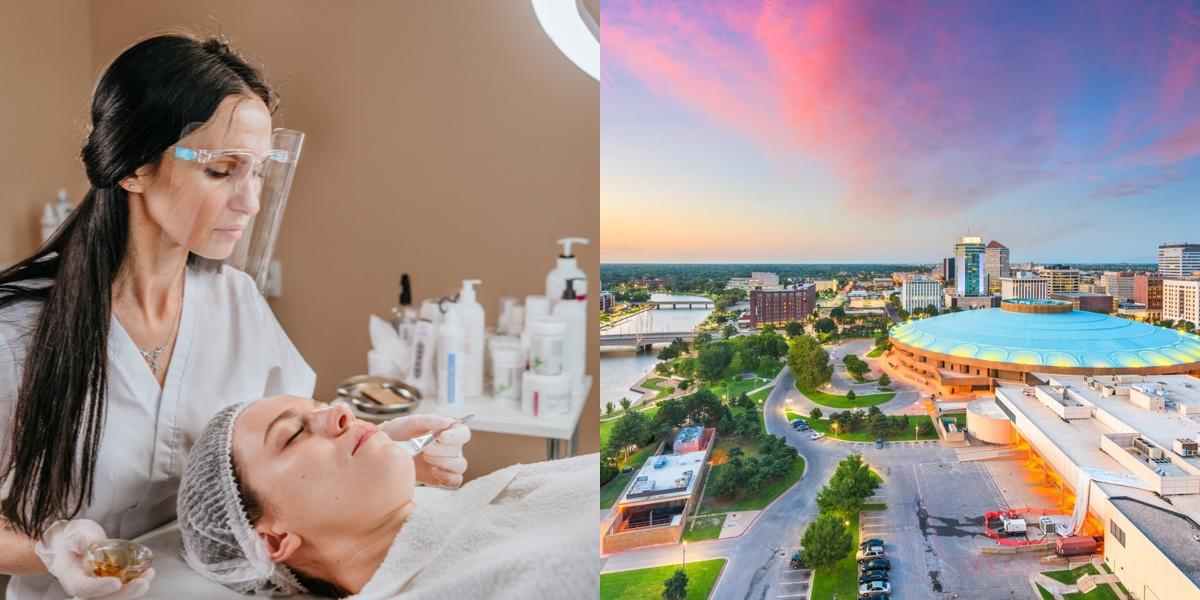How to Become an Esthetician in Kansas

What is an Esthetician?
An esthetician is a skincare specialist who focuses on providing various beauty treatments to clients. They are trained professionals who specialize in improving and maintaining the appearance of the skin. Some of the common responsibilities of an esthetician include:
- Performing facials and other skincare treatments
- Providing guidance on proper skincare routines and products
- Conducting skin analysis and recommending suitable treatments
- Performing hair removal treatments such as waxing or threading
- Applying makeup for special occasions or events
- Educating clients on proper skincare techniques and products
How do I get a job as an Esthetician?
Once you have obtained your esthetician certification, you are ready to start your career as an esthetician. Here are some steps to help you get a job as an esthetician:
-
Update your resume: Craft a professional resume that highlights your esthetician certification, education, and any relevant work experience. Include any additional certifications or training you have received, such as specialized skincare techniques or product knowledge. Emphasize your skills and abilities that are relevant to the job of an esthetician.
-
Build a portfolio: As a beginner esthetician, you may not have a lot of practical experience. However, you can create a portfolio showcasing your skills by including before and after pictures of clients you have worked with during your training. If you have done any freelance work or volunteered at events, include those experiences as well.
-
Network with professionals in the industry: Attend industry events, trade shows, and seminars to meet other estheticians and professionals in the skincare industry. Networking can help you learn about job opportunities, gain insights from experienced estheticians, and make valuable connections that can lead to job offers.
-
Apply to esthetician job openings: Look for job openings at spas, salons, dermatology clinics, or skincare clinics in your area. Check online job boards, company websites, and professional esthetician associations for job listings. Tailor your resume and cover letter to each job application, highlighting your relevant skills and experiences.
-
Prepare for interviews: Practice common interview questions and prepare answers that showcase your knowledge and passion for skincare. Be prepared to demonstrate your practical skills if required during the interview process. Dress professionally and bring along any necessary documents such as your esthetician license or certifications.
-
Consider freelance or self-employment: If you are unable to find a job as an esthetician right away, consider offering your services as a freelance esthetician. You can start by offering skincare treatments to friends and family and gradually build a client base. You can also consider renting a space in a salon or spa to offer your services independently.
Remember, building a successful career as an esthetician takes time and dedication. Be patient and persistent in your job search, and continue to enhance your skills and knowledge in the field of skincare.
Career Paths and Opportunities after Becoming an Esthetician
Becoming an esthetician opens up a wide range of career paths and opportunities in the skincare industry. Here are a few potential career paths you can explore after obtaining your esthetician certification:
-
Spa or salon esthetician: Many estheticians find employment in spas, salons, or wellness centers. As a spa or salon esthetician, you will provide a variety of skincare treatments such as facials, body wraps, and exfoliation treatments. You may also offer additional services such as waxing, makeup application, and eyebrow shaping.
-
Medical esthetician: Medical estheticians work in dermatology clinics, plastic surgery offices, and medical spas. In addition to traditional skincare treatments, medical estheticians may perform more specialized procedures such as chemical peels, microdermabrasion, laser treatments, and other non-invasive skincare procedures. They may also work closely with dermatologists or plastic surgeons to provide pre and post-operative skincare.
-
Product sales and marketing: With your knowledge and expertise in skincare, you can work in product sales and marketing for skincare brands. This could involve promoting and selling skincare products to professionals in the industry or working as a brand representative at trade shows and events. Additionally, you can also become a skincare consultant, offering personalized skincare advice and product recommendations to clients.
-
Makeup artist: Many estheticians have a keen interest in makeup artistry. With additional training in makeup application, you can work as a makeup artist for special events, weddings, or in the fashion and entertainment industry. As a makeup artist, you will use your skincare knowledge to create flawless looks for clients.
-
Education and training: If you enjoy sharing your knowledge and educating others, you can pursue a career in esthetician education. With additional training and experience, you can become an esthetician instructor at a cosmetology or esthetician school. You will be responsible for teaching the next generation of estheticians and guiding them in their journey to obtaining their certification.
These are just a few examples of the career paths and opportunities available to estheticians. The skincare industry is constantly evolving, and there are always new trends and techniques to explore. With dedication, continuous learning, and a passion for skincare, you can build a successful and rewarding career as an esthetician.
Final Thoughts
Becoming a licensed esthetician is an exciting and rewarding journey for anyone who has a passion for skincare. By following the necessary steps to get your esthetician certification, you can start your career in the skincare industry and explore various opportunities.
Whether you choose to work in a spa, medical setting, or pursue other career paths such as product sales or education, the field of esthetics offers endless possibilities. Keep learning, stay updated with the latest trends, and continue to enhance your skills to thrive in this dynamic industry. Good luck on your journey to becoming a licensed esthetician!
If this article doesn't match what you're looking for, you can check out these other articles:

Winlynd Caballero is a member of Dreambound's Sales team. She helps in handling the company's finullcial transactions, generating reports, and school sales. Beyond her responsibilities in the realm of numbers and business, Winlynd finds herself deeply immersed in a world of art and music.



